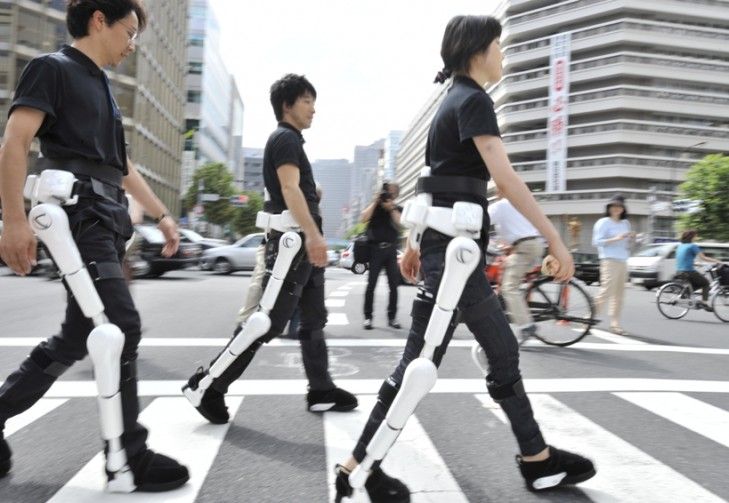New publications
A new development by Russian scientists will change the lives of disabled and elderly people
Last reviewed: 01.07.2025

All iLive content is medically reviewed or fact checked to ensure as much factual accuracy as possible.
We have strict sourcing guidelines and only link to reputable media sites, academic research institutions and, whenever possible, medically peer reviewed studies. Note that the numbers in parentheses ([1], [2], etc.) are clickable links to these studies.
If you feel that any of our content is inaccurate, out-of-date, or otherwise questionable, please select it and press Ctrl + Enter.
The topic of exoskeletons has been developing around the world for quite some time now.
In essence, an exoskeleton is a special suit with controls that is put on a person and increases his physical strength and endurance.

Russian scientists are also not standing still, but are making their contribution to the development of new technologies.
Scientists, employees of the Saratov Technical University Alexander Bolshakov, Boris Kuzmichenko, Viktor Glazkov, and postgraduate student Alexey Kulikov patented a new invention - an orthopedic leg prosthesis with a built-in electric motor, as well as equipped with a special saddle. With the help of this prosthesis, the load during walking becomes significantly less, and the process of walking itself becomes easier.
As one of the authors of the invention, Viktor Glazkov (Head of the Department of Artificial Intelligence Systems at the Saratov Technical University) says, the invention will really help people with disabilities and the elderly. The prosthesis also improves treatment, for example, in the case of complex fractures, the prosthesis promotes a speedy recovery. But the prosthesis is quite suitable for people who, due to circumstances (car accident, industrial accident, etc.), have lost a leg.
Currently, a similar prosthesis is produced by Honda Motor Corporation. The Russian invention is patented as a "Semi-automatic prosthetic system". Currently, there is only a prototype, which has expressed a desire to test various rehabilitation centers for the disabled.
The mobility that new technologies can provide is the greatest and most welcome gift for people with disabilities.
Exoskeletons have been developed by Japanese scientists since about 2005. In 2007, fully-fledged modified suits appeared and the first 20 units were manufactured, and a year later, more than 500 models appeared. In some countries, such suits are already on the market, although they cost about 50 thousand dollars. The amount is not small, so in some countries, exoskeletons are rented out (the average price is about 600 dollars per month). The biomechanical mechanism that is embedded in the suit helps a person move, this was clearly demonstrated by Seiji Widt, who, being confined to a wheelchair since 2006, with the help of one of the first exoskeleton developments, half conquered Mount Breithorn (4500 m). It was this result of a person with disabilities that launched the process of accelerated mass production.
Exoskeletons were originally designed to increase human strength and endurance. The first exoskeleton design allowed a person to lift a load weighing 100 kg. However, there are now many lifting techniques, so the invention turned out to be economically unprofitable, but the idea of using the model as an alternative to a wheelchair turned out to be very popular.
Increasing strength and endurance with the help of exoskeletons has interested the military, since soldiers often have to make long journeys with heavy weapons and equipment. Since an exoskeleton allows a person to be more resilient and strong, lift loads up to 100 kg with almost no effort, and makes walking easier, this development is also very valuable for the military and there are already models designed specifically for soldiers.
